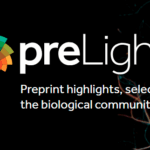By Ernesto Spinak
The recent report ‘Global eBook: a report on market trends and developments, 2016’1, that we began to analyze in a previous post2 provides an overview of the global development of the ebook market after a decade of uninterrupted growth and decrease in the last three years, at least from traditional publishers. (Note: all figures mentioned in this post, unless indicated by a reference, come from ‘Global eBook’). Due to the length of the report, this post is being published in parts.
The introduction of digital models into the book industry started to modify the production and exploration chain, where the traditional business, stable for long periods, has changed since library collections and ‘pay per download’ subscription models and open access distribution. The change that is being produced is similar to that of the music industry, where permanent media such as CDs are disappearing and music streaming in video portals imposes.
Another element that adds to the scenario is the digital self-publishing by the so-called ‘indies’ (independent authors). These new market players have great potential, especially in BRIC countries (Brazil, Russia, India and China), but do not yet rely on sufficient infrastructure. Self- publishing is flourishing, and between 2014 and 2015 almost 460,000 new titles were published, 75% of them published only on three online services: Smashwords, CreateSpace from Amazon and Lulu.
Unlike in developed countries, in Asia, especially China and India, the most important readers devices are mobile phones and, very rarely, tablets and ebook readers like Kindle. This PC independent reading modality is causing new agents outside the publishing world to come in, whose interest are centered in communication technologies.
In India’s case, because of the government’s effort to promote literacy, more than 60% of printed books are education books. As a result, higher education in India has adopted, for over a decade, digital models of publication, particularly electronic journals in the STM (Science, Technology and Medicine) area, which originate largely outside India and are produced by the world’s leading publishing groups in STM, although in the Social Sciences and Humanities there is a modest list of journals published by Sage India. On the other hand, the main distributors in India – Balani Infotech and Asia Pacific Group Limited – distribute a wide variety of electronic contents (ebooks, PDF, audio books, journals, classic literature, etc.) produced by more than 200,000 publishers around the world. Moreover, also the India’s National Library and Information Services Infrastructure for Scholarly Content (NLIST) of the Information and Library Network (INFLIBNET) provides universities and colleges in India prepaid access to over 80,000 ebooks and thousands of electronic journals, 90% of them from electronic sources located in the United States.
Noteworthy is also the fact that open access publishing is gaining ground in India in the STM sector and also in Social Sciences, in a market currently estimated at more than US$ 40 billion. Like in Europe and the US, many authors in India are dabbling in self-publishing using Amazon services at very low cost.
Well, looking at the overall picture it is natural that questions arise about which are the main components and the discussions that are shaping the ebook markets.
The book market, traditionally, was a small and medium-sized business that made their own market decisions, including those that were part, in a decentralized manner, from larger corporations. The arrival of the global market and the introduction of global players, particularly in the ebook market, is an important change in this scenario.
From a consumer’s point of view, ebooks add another offer to digital content and formats, not much different from watching movies, listening to music, playing video games and chatting on social networks. Therefore, it is expected that in this new ecosystem all content types will be seen on screens preferred by consumers, and they can show any type of media, regardless of whether the content has been produced by traditional publishers, by ‘indies’, or any other works produced and distributed by all kinds of creators. The books will be another ingredient on the menu. This will include content published professionally or by pirates.
To date, the relevant actors at global level are few, mainly Amazon and Apple. Nowadays, the global digital agenda and the communication transformation due to mobile phones are being driven by the “four horsemen”, namely Amazon, Google, Apple and Facebook.
Regarding books, Amazon, which started as an online bookstore, has developed, creating a whole chain of value as a global publishing sub market, including editorial services to authors (‘indies’), a market place to third parties, a reading platform, a readers community with over 20 million subscribers and a new monthly subscription Kindle Unlimited device that provides access to over one million titles. The self-publishing industry is heavily dominated by Amazon throughout Europe. Particularly, in the area of educational materials, Amazon began to conduct large-scale agreements with authorities in several countries, not only in the US, its country of origin, but in competition with local publishers in India and China, in a market estimated at billions of dollars. All this generated a series of political disputes in Europe driven by large traditional publishers.
Considering the initiatives of the other two of the ‘four horsemen’ we can say that:
- Apple continues to dominate the tablet market with over 40% market share, followed by Samsung with 25% and Amazon with a modest figure lower than 5%, although this is beginning to change due to the public preference for multi-functional tablets, leading Android to surpass Apple.
- Referring to Google, its full-text search in digitized books, initially called Google Book Search, Google Print and Google Library Project, together now named Google Books, had in 2015 more than 25 million books.
Other smaller, but also important players, are Rakuten Kobo (Canada), that declares having over 26 million subscribers in 90 countries and an inventory of over 4.7 million titles, and Tolino (Germany) with a broad partners base in Europe.
The high complexity of ebook markets, where several legal battles emerged in Europe and the US, understand the different contradictory (and old) strategies of assigning prices, piracy, and the facilities of self-publishing. This scenario can be seen as either an opportunity or a threat, according to the side of the counter one is. The consequence of this situation shows that a different book market is maturing, where two partner strategies begin to stand out: the subscription platforms and self-publishing books (including the Creative Commons options).
This will be the content of the third and final part of this delivery.
Notes
1. WISCHENBART, R., et al. Global eBook: a report on market trends an developments. Rüdiger Wischenbart Content and Consulting (RWCC). 2016. Available from: http://www.global-ebook.com/
2. SPINAK, E.eBooks – global market and trends – Part I: Print and digital publication in the global context. SciELO in Perspective. [viewed 25 June 2016]. Available from: http://blog.scielo.org/en/2016/06/22/ebooks-global-market-and-trends-part-i-print-and-digital-publication-in-the-global-context/
References
WISCHENBART, R., et al. Global eBook: a report on market trends an developments. Rüdiger Wischenbart Content and Consulting (RWCC). 2016. Available from: http://www.global-ebook.com/
SPINAK, E. eBooks – global market and trends – Part I: Print and digital publication in the global context. SciELO in Perspective. [viewed 25 June 2016]. Available from: http://blog.scielo.org/en/2016/06/22/ebooks-global-market-and-trends-part-i-print-and-digital-publication-in-the-global-context/
External Links
Amazon Publishing – <http://www.advicesbooks.com/index.php/what-is-amazon-publishing/>
CreateSpace – <https://www.createspace.com/>
Goodreads – <https://www.goodreads.com/>
Google Books – <https://books.google.com/>
Kindle Unlimited – <https://www.amazon.com/gp/feature.html?docId=1002872331>
Lulu – <https://www.lulu.com/>
Rakuten Kobo – <https://store.kobobooks.com/es-es>
Smashwords: your ebook, your way – <http://www.smashwords.com/>
Tolino – <http://mytolino.de/>
 About Ernesto Spinak
About Ernesto Spinak
Collaborator on the SciELO program, a Systems Engineer with a Bachelor’s degree in Library Science, and a Diploma of Advanced Studies from the Universitat Oberta de Catalunya (Barcelona, Spain) and a Master’s in “Sociedad de la Información” (Information Society) from the same university. Currently has a consulting company that provides services in information projects to 14 government institutions and universities in Uruguay.
Translated from the original in Spanish by Lilian Nassi-Calò.
Como citar este post [ISO 690/2010]:







![It takes a body to understand the world – why ChatGPT and other language AIs don’t know what they’re saying [Originally published in The Conversation in April/2023] Photograph of a white and silver robot holding a tablet in front of a luggage store. In the background, in the hallway, two people are walking with their backs to the camera.](https://blog.scielo.org/en/wp-content/uploads/sites/2/2023/04/lukas-hND1OG3q67k-unsplash_thumb.jpg)










Read the comments in spanish, by Javier Santovenia:
http://blog.scielo.org/es/2016/07/07/libros-electronicos-mercado-global-y-tendencias-parte-ii-la-publicacion-del-libro-impreso-y-digital-en-el-contexto-mundial/#comment-39412
http://blog.scielo.org/es/2016/07/07/libros-electronicos-mercado-global-y-tendencias-parte-ii-la-publicacion-del-libro-impreso-y-digital-en-el-contexto-mundial/#comment-39422